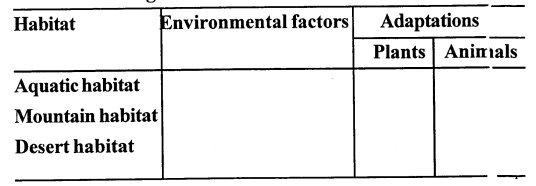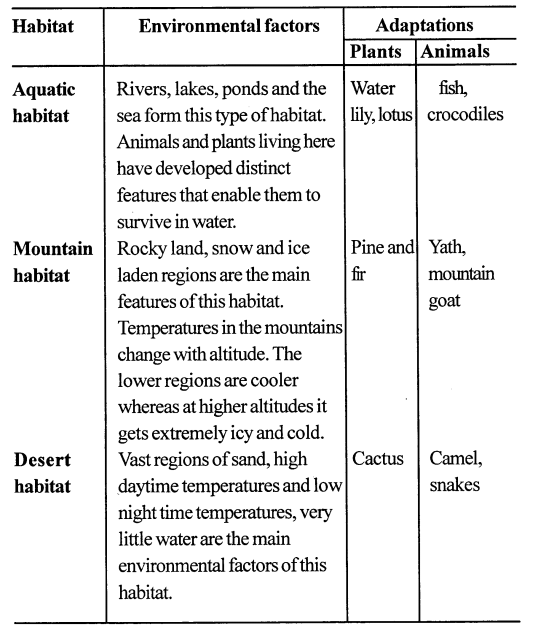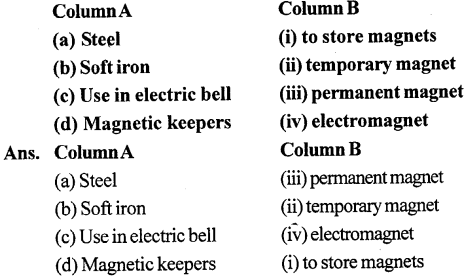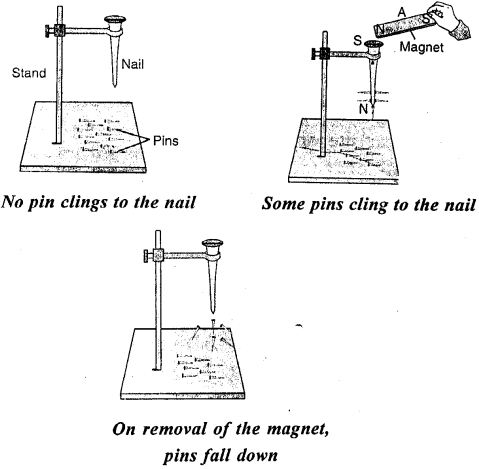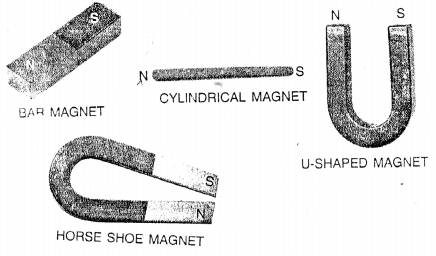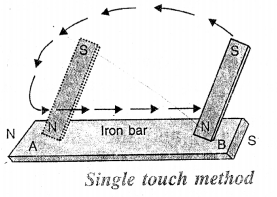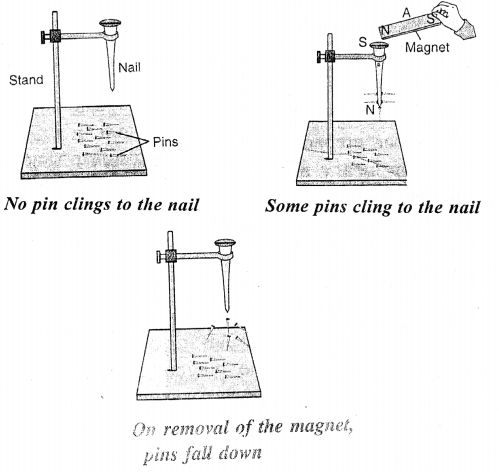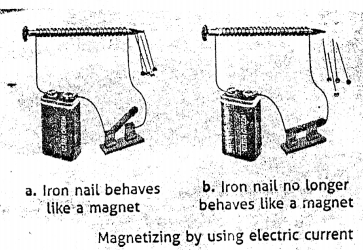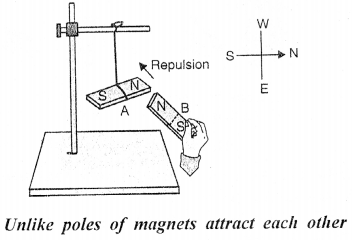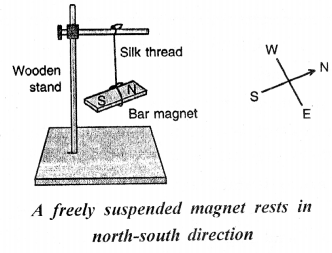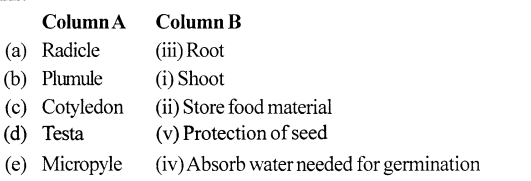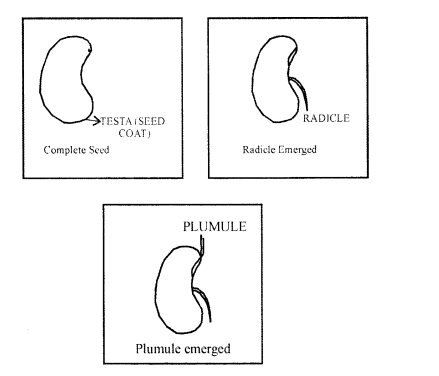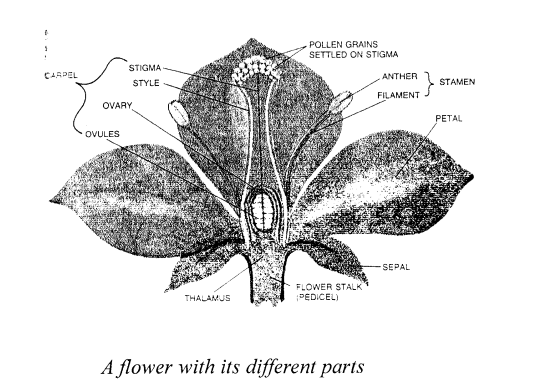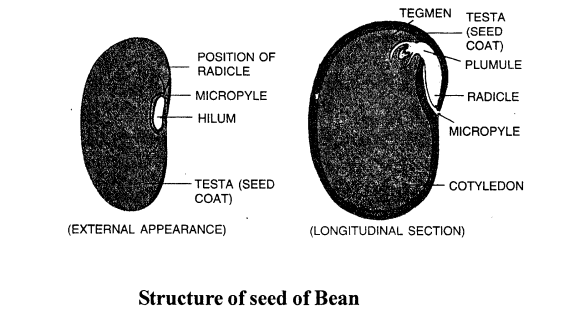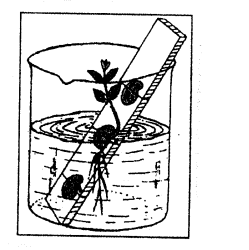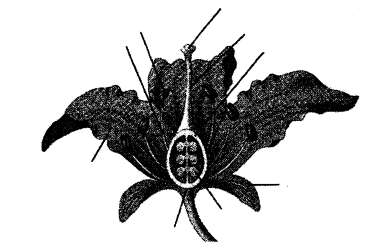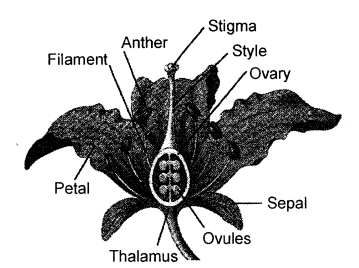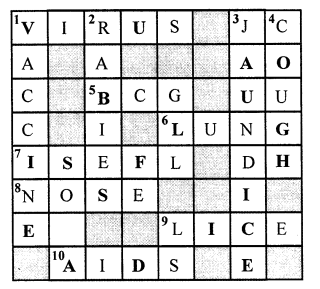Selina Concise Biology Class 6 ICSE Solutions – The Circulatory System
ICSE SolutionsSelina ICSE SolutionsML Aggarwal Solutions
APlusTopper.com provides step by step solutions for Selina Concise ICSE Solutions for Class 6 Biology. You can download the Selina Concise Biology ICSE Solutions for Class 6 with Free PDF download option. Selina Publishers Concise Biology for Class 6 ICSE Solutions all questions are solved and explained by expert teachers as per ICSE board guidelines.
Selina Class 6 Biology ICSE SolutionsChemistryPhysicsMathsGeographyHistory & Civics
Selina Concise ICSE Solutions for Class 6 Biology Chapter 6 The Circulatory System
Multiple Choice Questions:
1. Put a tick mark (✓) against the correct alternative in the following statements:
(a) Function of WBCs is to
(i) Transport oxygen
(ii) Help in clotting of blood
(iii) Provide immunity
(iv) Provide storage of food.
(b) Blood Capillary is a
(i) Broad tube
(ii) Artery with thick wall
(iii) Vein with large lumen
(iv) Narrow tube made up of endothelium only.
(c) Nucleus is absent in
(i) RBCs
(ii) VBCs
(iii) All blood cells
(iv) Liver cells.
(d) The only artery which carries deoxygenated blood is called,
(i) Hepatic artery
(ii) Pulmonary artery
(iii) Aorta
(iv) Renal artery
(e) Sphygmomanometer ni’sures
(i) Pulse rate
(ii) Heart beat
(iii) Blood pressure
(iv) Brain activity
(f) Pulmonary vein carries
(i) Oxygenated blood
(ii) Deoxygenated blood
(iii) Glucose-rich blood
(iv) C02 laden blood
(g) The blood tastes saltish due to the dissolved:
(i) Sodium chloride
(ii) Potassium chloride
(iii) Ammonium nitrate
(iv) Sodium nitrate
Short Answer Questions:
1. Differentiate between the following pair of terms:
Question 1(a)
Patelets and WBC
Answer:
Platelets
- These are colourless, oval or round, cytoplasmic fragments found floating in the blood.
- These play a major role in blood clotting.
- Their life span is 3-5 days and it is called thrombocytes.
WBC
- WBC are colourless and lack haemoglobin, larger in quantity, and have distinct oval and lobed nucleus.
- They prevent body from disease causing germs by providing immunity
- Their life span is short i.e. 5 to 20 days.
Question 1(b)
Pulmonary artery and pulmonary vein
Answer:
Pulmonary artery
- This involves circulation of blood from the heart to the lungs.
- It carries deoxygenated blood.
Pulmonary vein
- This involves circulation of blood to the heart from the lungs.
- It carries oxygenated blood.
Question 1(c)
Vena Cava and Aorta
Answer:
Vena Cava
- Vena Cava is a large vein.
- It carries deoxygenated blood from the upper and lower parts of the body i.e. head and shoulders.
Aorta
- Aorta is the large artery.
- It carries oxygenated blood to all parts of the body through its branches.
Question 1(d)
RBC and WBC
Answer:
RBC
- They do not have nucleus at maturity.
- They possess haemoglobin and are red.
- They help in transport of respiratory gases.
WBC
- They have a large characteristic nucleus.
- They are colourless as they have no pigment.
- They help in defence mechanism.
Question 2.
Give any three differences between an artery and a vein:
Answer:
Following are the differences between the artery and a vein:
Artery
- Arteries carry blood from the heart to various body parts.
- These carry oxygenated blood (except the pulmonary artery).
- Blood flows with high speed and under high pressure.
Vein
- Veins carry blood from different body parts to the heart.
- These carry deoxygenatec blood (except the pulmonary vein).
- Blood flows with low speech and under low pressure.
Question 3.
Blood consists of two parts — a liquid part and a cellular part. Name these parts and briefly write about them.
Answer:
- Plasma: The plasma is a light-yellow coloured, alkaline liquid which mainly consists of:
- Water- 90-92%
- Proteins – 7-8%
- Inorganic salts – 1%
- Other substances – traces
- Cellular elements : These elements are of three categories:
- Red blood cells (erythrocytes)
- White blood cells (leukocytes)
- Blood platelets (thrombocytes)
Question 4.
What is the role of haemoglobin in the blood ?
Answer:
The haemoglobin is the respiratory pigment which is formed of the iron containing part known as haemin and protein part known as globin. It helps to transport respiratory gases (oxygen).
5. Fill in the blanks with suitable words given below:
- The colour of a red blood cell is due to haemoglobin.
- The two lower chambers of the heart are called ventricles.
- The blood plasma contains a dissolved substance such as nutrient, proteins, waste products and harmones.
- The pulmonary artery takes the blood from the ventricles to the lungs.
- The instrument used to find out the blood pressure is known as sphygmomanometer.
- The blood loaded with carbon dioxide from the body comes into the right auricle of the heart.
- The oxygen-rich blood from the lungs comes into the left ventricle of the heart.
- The oxygen-rich blood is pumped into different parts of the body through aorta.
- The carbon dioxide loaded blood from right ventricle is pumped into the lungs through pulmonary artery.
- The liquid part of coagulated blood is known as serum.
Question 6.
In which organ of our body does blood get oxygenated?
Answer:
Blood becomes oxygenated in the lungs. The oxygenated blood is returned to left verticles by the pulmonary vein.
Question 7.
Which side of the heart (left or right) contains oxygenated blood?
Answer:
The left side of the heart contains oxygenated blood.
Question 8.
Name the disease in which the number of platelets reduces to 25,000 – 30,000 per cubic mm of blood. State its major symptoms.
Answer:
Dengue fever is one such disease in which the number of platelets get reduced to as low as 25-30 thousands per cubic mm of blood. The major symptoms of dengue are high fever, rashes or red spots on body, nausea or vomiting, pain in abdomen, back, or back of the eyes and muscles.
Long answer Questions
Question 1.
Name the three kinds of blood vessels found in human beings. With the help of suitable diagrams, differentiate between them.
Answer:
The three kind of blood vessels found in human beings are arteries, veins and capillaries.
- Arteries are the blood vessels that carry blood from the heart to the various parts of the body.
- Veins are the blood vessels that carry blood from the body parts to the heart.
Capillaries: These are the terminal branches of an artery, which rejoin to form a vein. A capillary is a very narrow tube whose walls have a single layer of cells with no muscles. Although the wall of a capillary is very thin, yet an exchange of nutrients, waste products and gases take place between the blood and the body fluids.
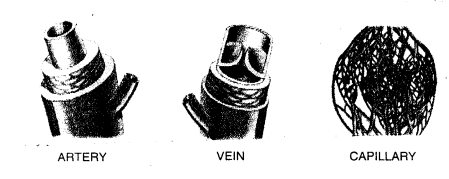
Differences:
Arteries
- Carry blood away from the heart.
- Have thick and more muscular walls.
- Carry oxygenated blood (except pulmonary artery which carries deoxygenated blood).
- The blood flows with j erks and under great force.
Veins
- Carry blood towards the heart.
- Have thin and less muscular walls.
- Carry deoxygenated blood (except pulmonary vein which carries oxygenated blood).
- The blood flows smoothly and under little pressure.
Capillaries :
- Arteries after entering an organ divide into number of smaller branches called arterioles which further divide repeatedly to form a network of fine branches called capillaries.
- The walls of the capillaries are very thin and are one cell deep.
- The Capillaries after the metabolic exchange unite to form larger vessels called venules, which again unite to form a vein.
PQ. During surgical operations or during accidents, the patient may be given blood from outside to save his life. What is the technical name of this process ? Briefly explain the precautions to be taken in this process.
Answer:
During surgical operation or an accident when excess of bleeding takes place, the patient may be given blood from outside to save his life.
The transfer of blood from the donor to the recipient is called blood transfusion.
The following precautions are taken before the blood is given to the needy person:
- Matching of the donor’s blood with that of the recipient should be done.
- It should be made sure clinically that blood of donor is free from any infection.
- Sterilization of all the instruments to be used during the operation is must.
Question 2.
State briefly, the difference between white blood cells and the red blood cells.
Difference between white blood cells and the red blood cells
Answer:
RBC
- They do not have nucleus atmaturity.
- They possess haemoglobin and are red.
- They help in transport of respiratory gases.
- Life span is 120 days.
- They are about 5 million/mm3of blood.
- In the embryonic stage the RBC are formed in the liver and spleen. But after birth, they are formed in the red bone marrow.
WBC
- They have a large characteristic nucleus.
- They are colourless as they have no pigment.
- They help in defence mechanism.
- WBC have a short life.span of 5 to 20 days.
- They are about 7000/mm3of blood.
- WBC are formed in the red bone marrow.
Question 3.
You can see some blood vessels on the outside of the hands specially in older people. Are those veins or arteries ? How can you confirm your answer ?
Answer:
In older persons the skin becomes loose as the fat below becomes less with age and the vessels passing through these areas especially on the outside of the hands become prominent. These are veins as they flow superficially. The veins are thin and less muscular. These carry the blood to the heart veins are placed superficially so they are easily visible to the eye and are prominent.
The blood in the veins will be carrying CO2 and will have many substances like sugar, amino acids, chemicals and bacteria.
Question 4.
Given alongside is a diagram of human heart showing its internal structures. Label the parts marked 1 to 6, and answer the following questions.

(a) Which types of blood is carried by the blood vessel marked 2?
(b) Name the main artery which takes the blood from heart to different parts of the body?
(c) Which chamber of the heart receives deoxygenated blood from the body?
(d) Which chamber of the heart receives oxygenated blood from the lungs ?
Answer:
- Left pulmonary artery
- superior vena cava
- Left pulmonary vein
- Right auricle
- Left auricle
- Left ventricle
(a) Deoxygentated blood.
(b) Aortic arch (Aorta).
(c) Right Atrium.
(d) Left Atrium
